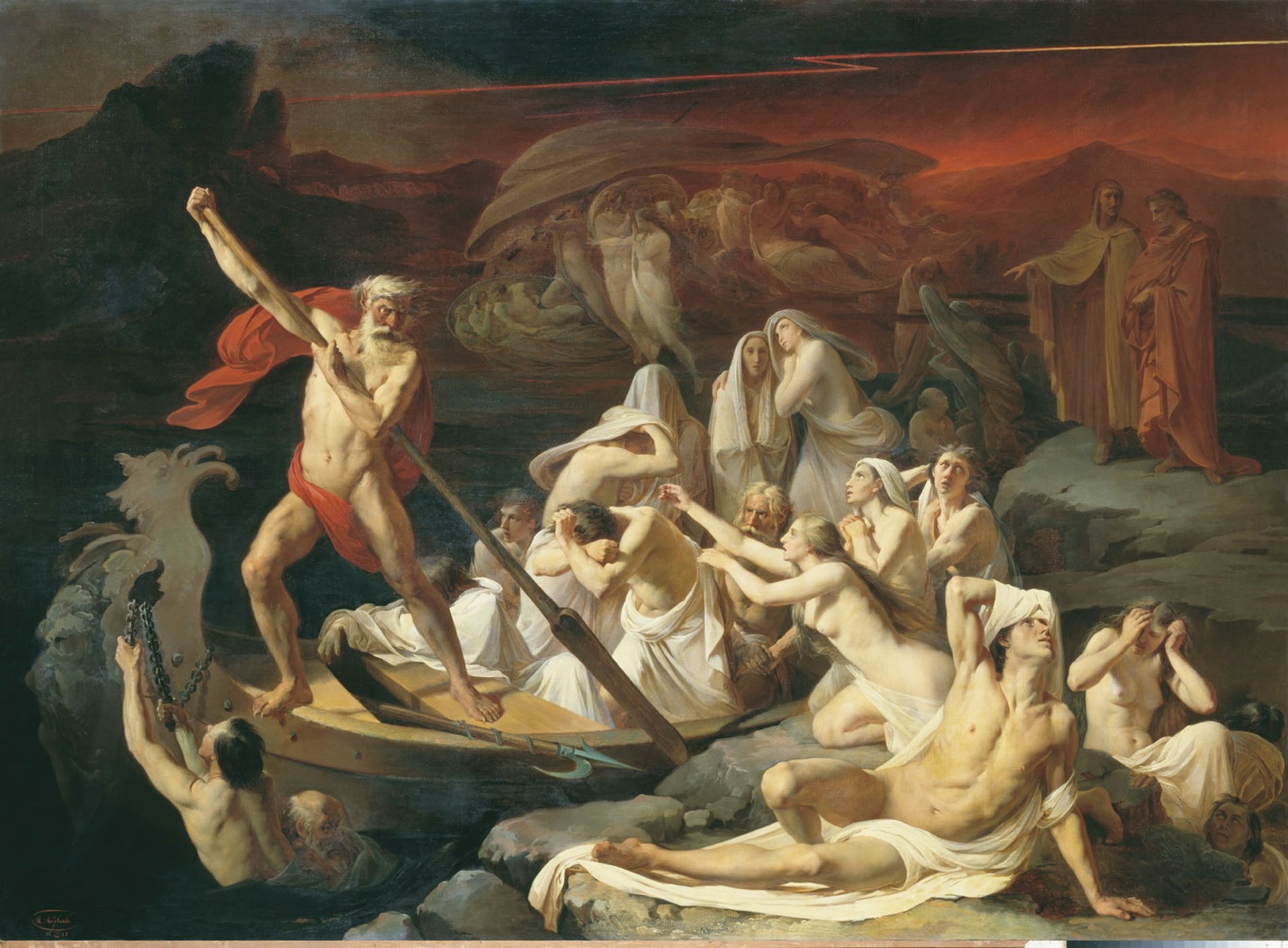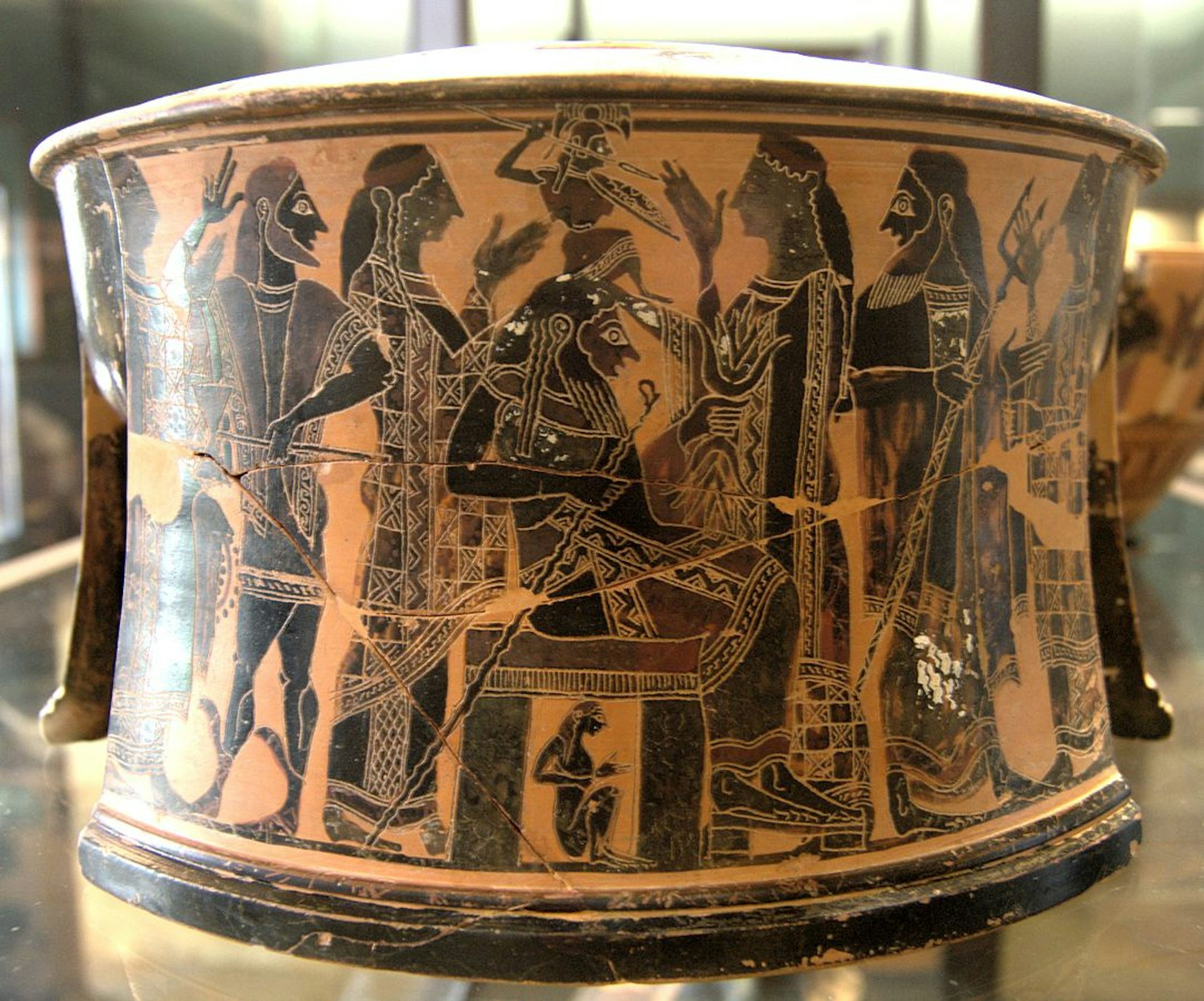Oceanids

Les Océanides by Gustave Doré (ca. 1860–1869)
Wikimedia CommonsPublic DomainOverview
The three thousand Oceanids were fair and benevolent nymphs, daughters of the Titans Oceanus and Tethys. Though they were often associated with water and the sea, the Oceanids did not have a single home and were instead scattered far and wide throughout the world. As goddesses, they were responsible above all for the care of the young. Over time, the Oceanids were increasingly confused with the Nereids, another group of sea nymphs, who in many ways took the place of the Oceanids in the Greek imagination.
A few of the Oceanids played an individual role in Greek mythology. Styx, for example, was an Underworld goddess, representing one of the main rivers of the Underworld. Dione was, in some traditions, a consort of Zeus and the mother of Aphrodite. Doris was the wife of Nereus and the mother of the Nereids. And Metis was an early ally and wife of Zeus. Otherwise, the Oceanids were seen primarily as companions of other gods, such as Artemis or Persephone. They were rarely worshipped on their own.
Etymology
Etymologically, the term “Oceanid” (Greek Ὠκεανίς, translit. Ōkeanís; pl. Oceanids, Greek Ὠκεανίδες, translit Ōkeanídes) is fairly straightforward: it is a patronymic, meaning “daughter of Oceanus.”
Pronunciation
English
Greek
Oceanid, Oceanids Ὠκεανίς, Ὠκεανίδες (translit. Ōkeanís, Ōkeanídes) Phonetic
IPA
[oh-SEE-uh-nid, oh-SEE-uh-nidz] /oʊˈsi ə nɪd, oʊˈsi ə nɪdz/
Epithets and Alternate Names
The epithets that attached themselves to the Oceanids tended to emphasize their physical attractiveness. As a group, they could be described by such epithets as τανύσφυροι (tanýsphoroi, “long-ankled”). But many individual Oceanids had epithets of their own, including ἐρατή (eratḗ, “lovely”), ἐρόεσσα (eróessa, “lovely”), εὐειδής (eueidḗs, “beautiful”), and θεοειδής (theoeidḗs, “godlike”).
An earlier form of the Oceanids’ name was Ὠκεανῖναι (Ōkeanînai). In Latin literature, they were referred to as Oceanitides.
Attributes
General
The three thousand Oceanids were nymphs known above all for their beauty. Because their father Oceanus embodied the “Ocean” (a world-encircling stream), the Oceanids were connected with water and the sea.
But the Oceanids did not all live in one place; rather, they were “dispersed far and wide”[1] across the sea as well as the earth. Some Oceanids, like Doris or Dione, lived with their divine consorts; others, like Perse, lived with their mortal consorts; one of the Oceanids, Styx, was revered as an Underworld goddess through the dreaded river to which she gave her name; and so on.

Charon Ferrying Souls across the River Styx by Alexander Litovchenko (1861). The Styx, one of the rivers of the Greek Underworld, was named after the Oceanid Styx.
Russian Museum, St. PetersburgPublic DomainAs a group, the Oceanids’ chief function was to care for young children. They shared this responsibility with their brothers, the Potamoi (or “Rivers”), who were also said to be three thousand in number.[2]
Iconography
In ancient art, the Oceanids were depicted as beautiful young women, often scantily clad. One Oceanid in particular, Eurynome, was sometimes represented with a mermaid-like fish tail.[3]
Family
The three thousand Oceanids were the daughters of Oceanus and Tethys, two of the original twelve Titans. Their brothers were the three thousand Potamoi, or “Rivers.”[4]
Many of the Oceanids had important consorts or children. Metis, for example, was married to Zeus (before he swallowed her and married Hera). Dione, another consort of Zeus, was in some traditions called the mother of Aphrodite, the goddess of love. Doris married the sea god Nereus and gave birth to the fifty Nereids. And Perse (sometimes called Perseis) married the sun god Helios and may have been the mother of Aeetes and Circe.
Mythology
The Oceanids and the Gods
The Oceanids were born to the Titans Oceanus and Tethys, two early sea gods. Though these nymphs did not play a significant role in Greek mythology, their impressive pedigree still gave them a place among the gods.
Sometimes the Oceanids were portrayed as companions or attendants of more important gods. They were playmates of Persephone, the daughter of Demeter, and were even said to be playing with her in a meadow when Hades kidnapped her and took her to be his bride in the Underworld.[5] Callimachus claims that Artemis, goddess of nature and wild things, asked her father Zeus for sixty Oceanids to serve as her attendants.[6]
Important Oceanids: Styx, Metis, and Others
Even though there were traditionally three thousand Oceanids, only a few had any individual importance.
Styx, the eldest and perhaps most famous of the Oceanids, married Pallas, son of the Titans Crius and Eurybia. Together they had four children: Zelos (“Rivalry”), Nike (“Victory”), Kratos (“Strength”), and Bia (“Force”). Styx herself was an important ally of the Olympians during their war against the Titans. One of the rivers of the Underworld was named after her, and she was consequently regarded as an Underworld goddess.[7]
Another important Oceanid was Metis. Like Styx, Metis—whose name means “intelligence” in ancient Greek—helped Zeus and the Olympians in their war against the Titans. She then married Zeus, who became the new ruler of the cosmos. But Zeus discovered that Metis was destined to bear a son who would overthrow him. Not wanting to lose his power, Zeus swallowed Metis. In this way, Metis—that is, “intelligence”—came to live forever in Zeus’ head. When it was time for the daughter of Zeus and Metis to be born, Hephaestus split Zeus’ head with an ax, and Athena burst out.[8]

Attic black-figure tripod showing the birth of Athena, the daughter of Zeus and the Oceanid Metis, from the head of Zeus. Attributed to the C Painter (ca. 570–260 BCE). Found in Thebes.
Louvre Museum, Paris / Bibi Saint-PolPublic DomainA few other Oceanids also had children by Zeus. These included Eurynome, the mother of the Charites (the “Graces”),[9] and Dione, the mother of Aphrodite.[10]
Other Oceanids who had important consorts or children included Callirhoe, wife of the golden giant Chrysaor and mother of the three-bodied Geryon;[11] Doris, who married Nereus and became mother of the Nereids;[12] Electra, who married Thaumas and became mother of Iris and the Harpies;[13] Philyra, who slept with Cronus in the form of a horse and gave birth to the Centaur Chiron;[14] Clymene, who married the Titan Iapetus and became the mother of Prometheus, Epimetheus, Atlas, and Menoetius (all of whom would eventually be punished by Zeus for challenging his power);[15] and Perse (or Perseis), a consort of Helios, who was sometimes said to have been the mother of Aeetes (the king of Colchis) and the powerful sorceress Circe.[16]
Worship
The Oceanids were not generally worshipped in ancient Greece. However, sailors seem to have sometimes invoked them when praying for a safe and successful voyage.[17]